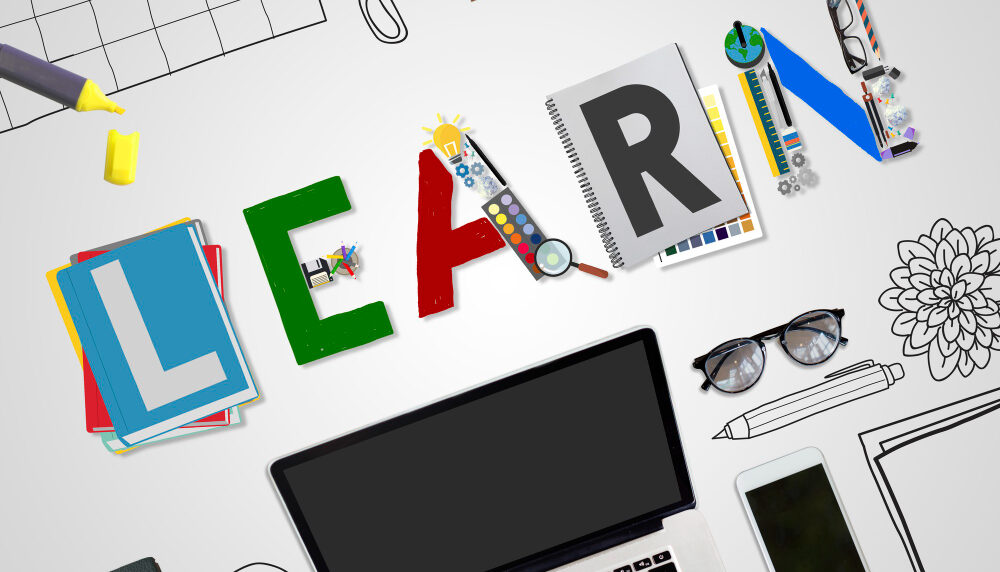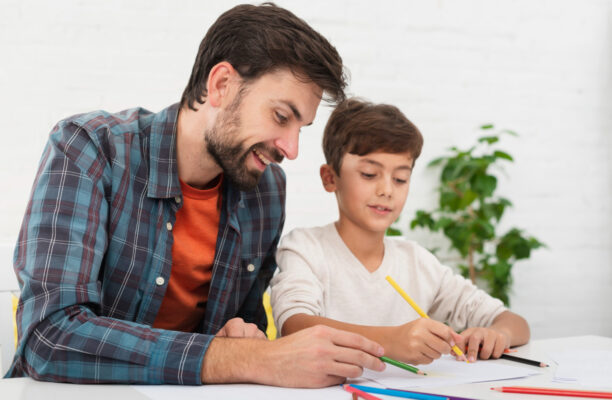Whether or not you believe in learning styles, most people will agree that everyone has different ways of taking in information.
If you have ever encountered a student who appears to stare off into space when you ask questions, this is often because they are an auditory learner.
Students with this learning style respond best to explanations with words, according to Gardner’s theory. They also enjoy presenting or writing their own notes.
Visual Learners
For decades, students have been told to identify their learning style. Educators, and parents alike, have been eager to help children develop their full potential by tailoring lessons to fit each child’s unique needs.
But, while the concept of learning styles is fascinating, the idea that everyone fits into a specific category tends to lead people down incorrect paths. As this Wired article explains, the way that people learn varies considerably and trying to categorize individuals into certain groups can actually prevent them from reaching their true learning potential.
One type of learning style is that of the visual learner. These are people who understand and retain information best when it is presented in a visual format, such as charts or maps. They often prefer to use a whiteboard when taking notes, as this allows them to draw diagrams and organize their thoughts. They also respond well to color-coded materials and are typically creative, with active imaginations.
Auditory learners, on the other hand, prefer to memorize information by listening. They can remember a list of historical dates much more easily when it is turned into a song than when they stare at the numbers on a calendar. In addition, they are often able to explain concepts and ideas more easily when they talk about them out loud.
Those who are kinesthetic learners, on the other hand, tend to remember information through movement and action. They may find it easier to recall a lesson when they are physically practicing it or engaging with other students through discussion. It is not unusual for kinesthetic learners to create games or other fun activities when studying, as they are often more interested in the practical application of their knowledge than in simply repeating it verbally.
Reading/writing learners, on the other hand, prefer to read and write. They like to gather information through articles, diaries and even old-school encyclopedias. They also enjoy creating their own written study materials such as flashcards and reviewers to memorize ideas. They are often expert with search engines and tend to be excellent writers, allowing them to express their understanding of new topics in writing.
Auditory Learners
Auditory learners absorb information through listening to others and themselves talk. They usually learn to speak at an early age and easily remember verbal instructions, songs and stories. They may forget details when studying by themselves, so it is important to minimize background noise while they are processing new information. During classroom lectures, they will benefit from repeating back what they have heard or having instructors draw maps and charts to help them understand the material better. Group discussions, engaging videos and using music and audiotapes can also be useful learning tools for auditory learners.
Kids with this learning style tend to be excellent communicators and socializers, so they often have many friends in school. They are great at reading and writing, but can struggle with math and science topics where they need to process data on their own. This type of learner may be labeled as a talkative student and can sometimes be accused of distracting their peers, but they are just trying to communicate their understanding of the material with the rest of the class.
As with visual and kinesthetic learners, kids who fit this learning style need lots of practice to master more difficult subjects like history, math and science. Keeping their interest and enthusiasm in these subject areas is key to academic success, so it’s important for parents to find ways to make these subjects fun or encourage their children to pursue hobbies outside of the classroom that they enjoy.
Regardless of their learning preference, all students can benefit from a holistic approach to education that embraces diversity in how people learn and approaches complex problems. This teaches students that there is more than one right way to solve a problem, fosters a sense of inclusion and prepares them for a world that will always be diverse and full of different learning styles. Incorporating different types of learning into your child’s studies can turn hard assignments into a breeze and help them become well-rounded scholars that are adaptable to all sorts of situations and environments in the future.
Kinesthetic Learners
Kinesthetic learners prefer hands-on learning experiences and tend to respond best to practical demonstrations. These individuals may fidget during class and may have difficulty following directions. Often these students enjoy acting out or dramatizing a topic to help them remember concepts. They also may benefit from learning through manipulatives, creating visual tools, or tracing.
Role-playing workplace scenarios can help kinesthetic learners practice tasks and interactions they may encounter on the job. For example, a new customer service employee could role-play with trainers to learn how to handle a complaint or assist an unsatisfied client.
Providing physical movement breaks can help kinesthetic learners stay engaged during class. During these short periods of time, the kinesthetic learners can stretch, walk, or engage in other physical activities that will refresh their mind and body. As a result, they’re likely to retain more information and find the material easier to understand and absorb.
While we can’t put every student into a single learning style category, we can use these styles as guides to tailor learning experiences to maximize each child’s potential. For example, an auditory learner can listen to stories about different holidays around the world while a visual learner examines pictures of holiday celebrants and a kinesthetic learner handles costumes and artifacts associated with those celebrations.
To identify your child’s learning style, observe their reaction and response to various classroom materials, studying habits, and study sessions. This will allow you to better understand their learning preferences and offer suggestions that can improve their performance and enjoyment of schoolwork. For instance, a kinesthetic learner might benefit from color-coded notes or flashcards while an auditory learner may improve their retention by recording themselves reciting important information. In addition, a visual and kinesthetic learner might work together to create a video about a science topic they’re learning. This will help them retain more information while fostering socialization and collaboration. Lastly, a social learner might be more effective when they’re quizzing each other or working in groups during study sessions. They’re more likely to retain the most knowledge when they’re actively engaging with it.
Reading/Writing Learners
These students tend to be strong with written information and can often recall details they read in books or articles. They also like taking notes and prefer quiet study environments. These students might intuitively use a variety of tools to help them learn, such as rewriting their notes, creating index cards, choosing a physical book over an audiobook, and using closed captioning on videos. They may find career choices such as journalism, editing, advertising, research and economic advising to be a good fit for their learning style.
This group can sometimes be a little more difficult to identify, as they may not always speak up in class or show that they have an interest in the subject matter. They are most likely to excel in classes that have hands-on experiments and demonstrations, field trips, and even video conferencing.
It’s important for teachers to understand these learning styles in order to best support their students. In recent years there has been a push for teachers to make sure they are addressing the needs of all learners. In addition, it’s equally important for parents to understand these learning styles so they can better support their children with school work and in day-to-day life.
Understanding learning styles can be a little overwhelming for teachers, as it takes a lot of time to master ways to adjust instruction and teaching methods to appeal to all learners. However, once teachers begin to understand how students acquire and retain information, they will realize that they can still teach effectively regardless of the student’s dominant learning style. They will just need to present it in a way that is most beneficial for their students. For example, if you have an auditory learner who bombed a test, instead of asking them to verbally answer questions in front of the class, try allowing them to write down their thoughts and then pair them up with classmates before opening the discussion up to the whole class. This will give them a chance to process what they’ve heard and feel more comfortable sharing their answers.



